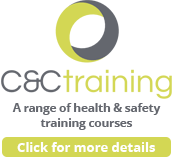Our advisors are completing daily site and workplace inspections. A common trend appears in their reports when challenging the suitability and safety of ladders used in these locations
Thankfully, we see fewer domestic ladders in the workplace, however, we do see a number of ladders that appear as EN 131, that are far from suitable and therefore inherently unsafe. Many of these ladders have been purchased for online sellers, so here is some advice on buying safe ladders. (the Ladder Association research as part of their ‘Step Up to Safe Ladders’ campaign found that 70% of commercially available multi-purpose ladders tested failed to meet the minimum safety requirements to keep users safe)
- Take some time to research before you buy. You can carry out a quick online check of the company or brand to check their business location and visibility in the market. If they do not have a UK/ EU address, then it can make it much more difficult to contact them if you have an issue after you buy.
- Check product reviews. These are a great way of hearing first-hand from other consumers and often give valuable insight into the product quality, mainly if it falls below standard. But beware, some companies and brands post fake positive reviews, so read them carefully, note where the reviewer is based or how many reviews they have previously posted.
- Do not make decisions solely on price. But, if something is cheap, you should question why. That is not to say it is inadequate quality, but it’s certainly a prompt to make you do a bit more homework. Genuine quality products can cost more to manufacture due to the enhanced testing and cost of materials, but equally, a higher price does not necessarily mean quality.
- Remember, online platforms take little or no responsibility for the quality or safety of the products sold on their platforms and place the responsibility for safety firmly with the seller. Do not assume product safety and compliance checks have been carried out by them before they placed them online for sale.
- Do not assume physical stores sell only safe products. They could knowingly – or unknowingly – be stocking products that do not meet product standard EN 131. Check labelling for print quality or spelling errors, check product quality as best you can, and speak to the retailer if you have any questions.
- Avoid ladders that are CE or UKCA marked. Despite what you might think, ladders cannot be CE or UKCA marked, so avoid any that bear those markings.
- Buy from a Ladder Association member. Members are committed to high standards of safety, and by joining the Association, they pledge to only make or sell ladders that comply with EN 131 (or international equivalents) and are certified by a third-party Conformity Assessment Body. A full list of members can be found on the Ladder Association website: ladderassociation.org.uk
- When you receive your ladder, check it. Check the product, the instruction manual (every ladder should come with one) and the labelling on the ladder itself.
- If you think the ladder is unsafe, dangerous, or not made to standard, do not use it! You should then contact your local Trading Standards team.











